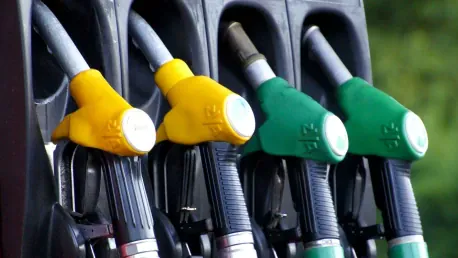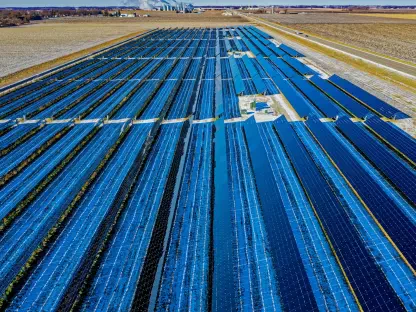The Renewable Fuel Standard (RFS), marking its 20th anniversary this year, has played a transformative role in guiding the United States’ energy and agricultural policies. Established under the Energy Policy Act of 2005, the RFS mandates specific annual volumes of renewable fuel to be blended into transportation fuels such as gasoline, home heating fuel, and jet fuel. The directive aims to reduce emissions and promote energy independence by increasing the use of renewable energy sources. This policy has fundamentally altered ethanol production dynamics and agricultural trends, while also yielding significant economic and environmental benefits for the nation.
The Genesis of the Renewable Fuel Standard
Initially, the establishment of the RFS led to a rapid surge in ethanol production, with corn being the primary feedstock due to its favorable starch characteristics, abundant production, storability, and ease of transport in the U.S. Ethanol production capacity skyrocketed from less than 4 billion gallons annually in 2005 to more than 6 billion gallons by 2007. This marked increase was driven by mandates that required higher volumes of renewable fuels to be integrated into the U.S. energy mix, pushing refiners to ramp up ethanol production to meet legislative requirements.
Continued legislative support via the Energy Independence and Security Act of 2007 further expanded the scope of the RFS, catapulting ethanol production capacity beyond 12 billion gallons. Over the years, ethanol plants grew in number and distribution; today, there are 187 plants across 21 states with a combined production capacity of 18 billion gallons annually. These facilities are predominantly concentrated in the High Plains region, particularly in Iowa, Nebraska, and South Dakota. This regional clustering takes advantage of the robust corn production in these states, ensuring a consistent and efficient supply chain for ethanol production.
Ethanol’s Role in Fuel and Agriculture
Ethanol expediently replaced methyl tertiary butyl ether (MTBE) as a critical oxygenate in gasoline, improving combustion efficiency and reducing emissions. Standard gasoline blends in the U.S. now include E10, a 10% ethanol blend, and some states permit E85, a blend of up to 85% ethanol. This transition toward ethanol-blended fuels resulted in consistent domestic consumption of ethanol, steady at approximately 14 billion gallons annually since 2015, with any surplus being exported to international markets.
The heightened demand for ethanol reshaped the fundamentals of U.S. agriculture, particularly for corn. Prior to the RFS, less than 15% of the U.S. corn crop was designated for ethanol production. This figure soared to 42% by 2012, thanks to the RFS mandates, although it has since stabilized at around 35% in 2024. The increased demand for corn spurred farmers to expand their planting acreage by 11%, reaching 90.7 million acres. This expansion, coupled with advancements in agricultural practices such as the use of hybrid seeds, precision farming, and improved nutrient management, led to a significant 36% rise in corn production from 2005 to 2024.
Co-Products and Economic Benefits
Beyond ethanol, a bushel of corn generates valuable co-products including distillers dried grains with solubles (DDGs) and corn oil. A bushel of corn produces over 2.7 gallons of ethanol, approximately 17 pounds of DDGs, and 0.7 pounds of corn oil. DDGs serve as a high-nutrient livestock feed, witnessing a domestic demand peak of nearly 29 million metric tons, stabilizing around 25 million metric tons through 2024. The international demand for DDGs also surged, with exports increasing from 1.2 million metric tons in 2005 to over 10 million metric tons by 2013.
Corn oil, another valuable byproduct, has found diverse uses in food, feed, fuel, and various industrial applications. The increasing market for these co-products has provided additional revenue streams for ethanol producers and farmers, further incentivizing corn farming and ethanol production. This multifaceted benefit underscores the broader economic advantages catalyzed by the RFS, driving agricultural productivity and supporting rural economies through job creation and enhanced farm incomes.
Energy Independence and Environmental Impact
One of the most significant contributions of the RFS has been enhancing U.S. energy independence by reducing reliance on imported crude oil. By integrating ethanol into gasoline at a 10% blend rate, the U.S. cut crude oil imports by approximately 702.6 million barrels in 2024. This reduction not only underscores economic gains by retaining capital within the national economy but also has important geopolitical implications, reducing dependence on volatile international oil markets.
Environmentally, the adoption of ethanol as a fuel additive has contributed to lowering greenhouse gas emissions. Ethanol’s use in gasoline reduces the carbon footprint of the transportation sector, resulting in cleaner air and improved public health outcomes. The environmental benefits of ethanol are aligned with broader policy goals aimed at mitigating climate change and promoting sustainable energy use.
The Future of Ethanol and Renewable Fuels
Celebrating its 20th anniversary this year, the Renewable Fuel Standard (RFS) has significantly impacted the United States’ energy and agricultural sectors. The RFS, established via the Energy Policy Act of 2005, mandates specific annual volumes of renewable fuel to be blended with transportation fuels like gasoline, home heating oil, and jet fuel. This directive’s primary goals are to reduce greenhouse gas emissions and to enhance energy independence by promoting the use of renewable energy sources. Over the past two decades, this policy has dramatically transformed ethanol production and altered agricultural practices. Furthermore, it has delivered notable economic and environmental benefits nationwide, highlighting the importance of renewable energy in today’s world. The RFS continues to shape the energy landscape, reflecting an ongoing commitment to sustainability and energy diversification in the United States.









